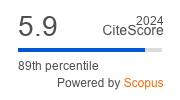Article | Open Access
Contextualization: A Path to Chinese Traditional News Media’s Integration Into Social Media
| Views: | 2985 | | | Downloads: | 4303 |
Abstract: Meyrowitz’s media context theory proposes that new media and their contexts will lead to new behaviors. This article adopts media context theory as a framework and utilizes a textual analysis approach to analyze what Meyrowitz termed middle region behaviors and the contextualization strategies of the traditional Chinese news media (People’s Daily) on the social media platform Weibo. The findings reveal three of People’s Daily’s Weibo news’ innovation strategies: the middle regionalization of news contexts (live news, vlog news, chatbox news); personalized production of important news (Weibo commentary, user-produced news); and equal dialogue with the public (daily greetings, holiday greetings, popularizing science). The study also indicates that traditional news media can utilize social media to consolidate communication effectiveness and reconstruct their credibility while actively participating in social governance. In light of these findings, we think that the “contextualization” strategies employed by People’s Daily on the Weibo platform offer meaningful possibilities for traditional news organizations’ integration into social media, such as exploring innovative approaches to news presentation, emphasizing audience interaction, appropriately providing “non-news content” for the audience, and maintaining a commitment to objectivity and fairness in news reporting.
Keywords: China; innovation strategy; news organizations; People’s Daily; social media; traditional media
Published:
© Difan Guo, Haiyan Wang, Jinghong Xu. This is an open access article distributed under the terms of the Creative Commons Attribution 4.0 license (http://creativecommons.org/licenses/by/4.0), which permits any use, distribution, and reproduction of the work without further permission provided the original author(s) and source are credited.


